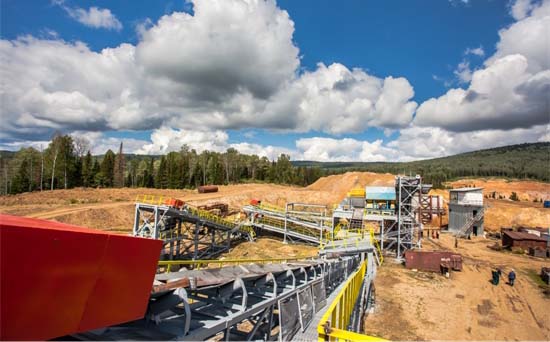Battery Manufacturing Supplier Uses Cat Power
Different materials are combined in the production of batteries. A material supplier to a battery manufacturer purchased a caterpillar diesel generator to meet their power requirements.
Construction of Lithium Batteries
We use battery power in all walks of life. They power our cell phones, watches, laptop computers, iPads, etc... Batteries that use lithium in the construction can allow the battery to be recharged and used for many cycles before a replacement is needed. Lithium batteries use different components in construction than those of an alkaline battery. While components differ, each battery uses an anode, cathode, and electrolyte in its construction. Lithium is used in the construction of rechargeable and electric car batteries. Lithium must be mined and extracted.
Lithium Brine Extraction
The most popular method of mining lithium is to extract it from brine reservoirs. These reservoirs are largely located on the salt flats of South America. Holes are drilled into the ground to access the brine deposit. Brine is pumped to evaporation ponds on the surface. Solar evaporation removes the water from the brine pond. This can take months or years. Once the brine has reached the ideal lithium concentration, it is pumped to a recovery facility for lithium extraction. After the lithium extraction is complete, the remaining brine solution is pumped back into the underground reservoir. Go to
Lithium Mining for more information. Sea water also offers vast quantities of lithium. New technologies are investigating extraction methods.
Hard Rock Lithium Extraction
Lithium is contained in approximately 100 different minerals. Below are five of the most mined:
- Spodumene
- Lepidolite
- Petalite
- Amblygonite
- Eucrptite
Spodumene leads the list for the most mined mineral. The mineral (Spodumene) is removed from above or underground mines. The rocks are crushed into powder and combined with chemical reactants, such as sulfuric acids. This slurry is heated, filtered, and exposed to an evaporation process. Lithium carbonate remains after the evaporation process.
Nemaska Lithium mine is an example of hard rock extraction.
Caterpillar Generator Ships to Battery Supply Chain Manufacturer in Canada
Lithium extraction from hard rock and brine remnants both require an advanced process. Power interruptions to this process can add cost or render the base product not usable. We recently supplied a 1250 kW Caterpillar generator set to a industrial supplier in Canada. The generator is housed in a sound attenuated enclosure to dampen its sound during operation. The pictured featured shows a small portion of this large medium voltage 4160 Volt industrial genset.
This is considered a plug-and-play generator. Once it arrives to the manufacturing facility, is fueled, and the power connected, it is ready to assume the load. Equipped with a Caterpillar ECMP controller, the control system allows the operator to monitor the generator operating conditions.
A 1,200-gallon double wall fuel tank helps ensure the fuel supply during lengthy power outages. All generators pass a 31-point inspection prior to sale. All sizes and styles of generators are maintained in our stock. We can arrange shipping for your selected generator within 24-hours in most cases. Go to
Inventory to view our in-stock generators.
Rock crushing produces a large amount of dust. Many times, weather offers extreme operating conditions. We have the ability to design and install modifications to generator sets that allows for operation in extreme conditions. Our skilled technicians perform service, maintenance, and troubleshooting tasks for all of Colorado and Southern Wyoming.
Contact Us with any power generation needs.
Diesel Blog Team
| 1/21/2019 1:59:52 PM
|
0 comments